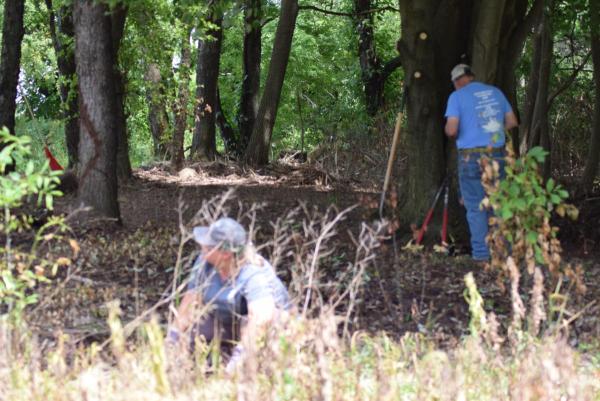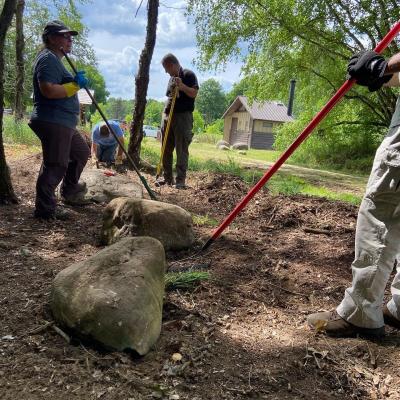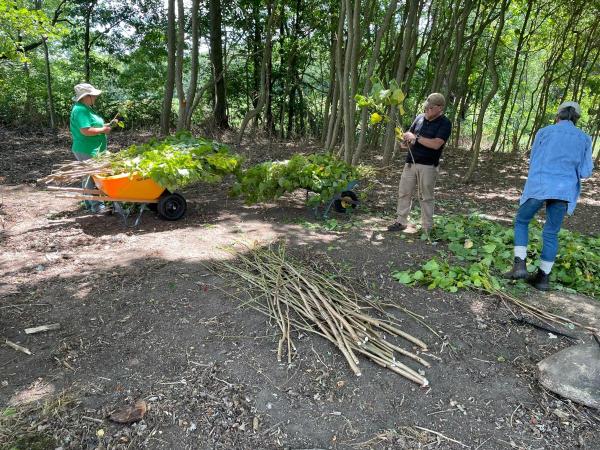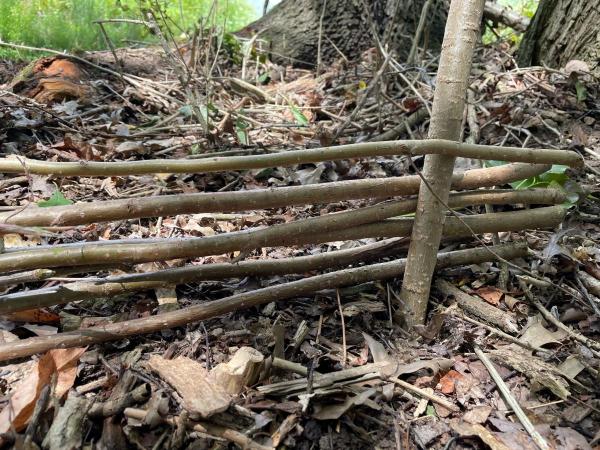Nature Play Space at Dix Park

What is Nature Play?
The idea behind a nature play space is to incorporate the surrounding landscape and vegetation to bring nature to children's daily outdoor play and learning environments.
Ideas for Nature Play
| Balance on logs | Explore the garden | Explore a log - what can you find? |
| Create a den | Find evidence of wildlife | Look for shapes in nature |
| Look for insects | Draw with a stick in the soil | Walk across the rocks |
| Build a nest | Take pictures | Construct an obstacle course |
| Listen to the birds | Look for shapes in the clouds | Find the colors of the rainbow |
The Necessity of Nature in Child Development*
- Regular habits of active play during childhood are one of the best predictors of active adulthood—a perfect prescription for combating the obesity epidemic.
- School children who use playgrounds with trees, fields, shrubs, and vegetated edges show more creative play, better concentration, and more inter-gender play than peers with equipment-focused playgrounds.
- Outdoor play in green settings reduces the symptoms of attention-deficit hyperactivity disorder in children.
- According to the “hygiene hypothesis,” early exposure to plants, animals, and soil helps children’s immune systems to develop properly, making them less vulnerable to allergenic conditions like asthma and peanut allergies.
- Frequent, unstructured childhood play in natural settings has been found to be the most common influence on the development of life-long conservation values.
*excerpted from A Parent’s Guide to Nature Play: How to Give Your Children More Outdoor Play by Ken Finch, Founder of the Green Hearts Institute for Nature in Childhood.
Positive Risks
“We found that play environments where children could take risks promoted increased play time, social interactions, creativity, and resilience,” said Mariana Brussoni, lead author of the study, and assistant professor in UBC’s School of Population and Public Health and Department of Pediatrics. “These positive results reflect the importance of supporting children’s risky outdoor play opportunities as a means of promoting children’s health and active lifestyles.”
Playgrounds that offer natural elements such as trees and plants, changes in height, and freedom for children to engage in activities of their own choosing, have positive impacts on health, behavior and social development.
“These spaces give children a chance to learn about risk and learn about their own limits,” said Brussoni, also a scientist in the British Columbia Injury Research & Prevention Unit at the Child & Family Research Institute at BC Children’s Hospital. https://news.ubc.ca/2015/06/09/risky-outdoor-play-positively-impacts-chi...
Nature Play at Home
Looking for more ways to encourage nature play? Download this manual from the National Wildlife Federation for inspiration.
Building our Nature Play Space at Dix Park
 |  |
 |  |

